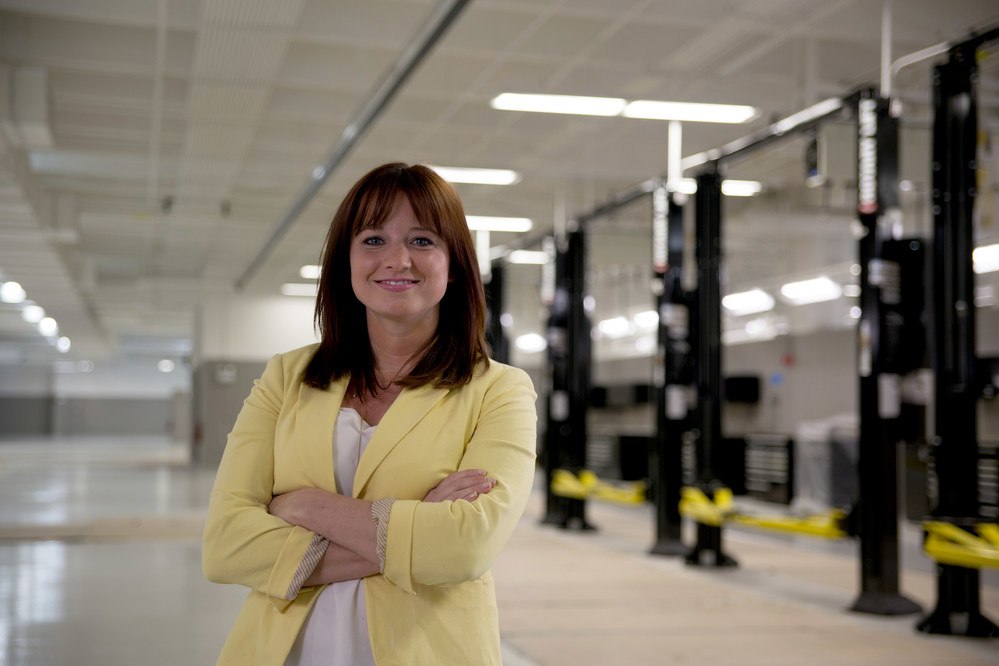Growth & Customers
10 steps to grow your customer base

Customers are the lifeblood of any business, so it’s vital you can keep generating leads and retaining your existing customers. But doing so is often a concern for businesses, with more than one in three companies saying that generating new business is their biggest worry.
We spoke to two small business owners and asked them to share their experiences of growing their customer base.
 Get to know your prospects and customers
Get to know your prospects and customers
There’s a lot of talk about personalisation and customer insight – that’s because it works.
Understanding your customers’ needs can lead to better insights into your audience and allows you to develop services that are matched to your clients’ needs.
It can also help you stand out from your competitors, something that Alice Boden understands. She’s managing director of Bodice of Holt, which offers a home delivery service for fruit and vegetables. She says: “We know our customers really well and know their preferences so we can tell them when certain things are coming – when they’re in season and in stock. Our service is completely personalised to their needs.
“This is where we have an advantage over bigger suppliers. I have a good relationship with our customers and I know the business. Because I source the produce and pack the boxes, I know exactly what’s happening and can provide a fully personalised service.”
And it’s not just consumers who like this approach. It also works for business clients too.
Mike Cockburn, director at Sogno, a positive psychology coaching company, says, “It’s important that we understand what our clients are trying to achieve: their mission, their goals. Then we look at how we can accelerate that and customise our services to meet their needs. It leads to a more balanced relationship.”
 Divide your time: support existing clients and look for new work
Divide your time: support existing clients and look for new work
In simple terms, there are two ways to get more business – win new business or get your existing customers to spend more. It’s important to ensure you don’t focus on one at the expense of the other, as both are important for growing your customer base.
Mike says, “We do have a lot of repeat business and feel we offer the most value with long-term clients. But you need to keep bringing in new business too. Old business can falter if budgets change or people move on, so it’s important to look for new opportunities. You need to start a relationship early, so that it’s mature enough to deliver new business when your other work is completed.”
 Offer great customer service
Offer great customer service
To keep your existing customers coming back, it’s important you offer great customer service. In fact, research shows that 78% of people have walked away from a sale as a result of poor customer service.
But if you get it right, it has a positive impact on your customer base and your bottom line. Loyal customers are worth up to ten times the amount they originally spend.
Take the time out to evaluate your customer service, make sure you respond to your customers quickly and keep an eye on social media so you can offer great service online too. Your customer numbers should grow as a result.
 Make the most of your networks
Make the most of your networks
Ask a business owner where their customers come from and most will tell you that word of mouth is their main source.
Recommendations from others are valuable: “It’s the idea of social capital – the value of relationships,” says Mike. “If I know people that they know, then there’s an implied trust.”
Most of his clients come from networking, something he’s passionate about.
“I think people sometimes equate networking with sales and prospects can be sensitive to a sales approach. But if you recognise that only so many contacts will go on to be clients, then it reduces the pressure. The work we do is based on trust and openness so the way we make contact is a good opportunity to demonstrate that. I meet up with loads of people and if I can help, they remember that. That can open new doors.”
Alice agrees. “Networking is really useful. It’s not just about selling, it’s about what you can do for people.”
 Look for partnerships with other businesses
Look for partnerships with other businesses
Your ideal customer will already have relationships with other businesses and this offers a great opportunity.
By partnering with other firms which offer complementary services, you can not only reach a new audience but also potentially offer more to your customers.
It’s something that Bodice of Holt are looking into at the moment: “There’s a body development firm in Bath, which offers personal training and nutrition advice. Part of their service is to help their customers to understand what they should be eating when they’re training, which includes fruit and vegetables. They are recommending us to their clients – and we’re look at delivering directly to the gym once a week.
“It’s about looking around and keeping your eyes peeled for opportunities. Be open to new ideas and speak to people to see if they’re interested.”
Building a virtual business
Want to turn your business into one that's flexible, efficient and doesn't confine you to the office? Get our free guide and discover how you can save time and money by building your own virtual business.

 Make use of social media
Make use of social media
Social media has revolutionised the way customers and businesses can share information and have conversations.
From online customer service to using social media to get insights into your audience, there are now excellent opportunities for businesses to reach out via Facebook, Twitter, LinkedIn and other networks. Which ones work for you will depend on your business, your audience and the way you like to communicate.
 Think big
Think big
If you’re a small business, can you work with a big company? The simple answer is yes.
But many small companies find it intimidating to make contact. Mike has a range of big clients, from Greggs to Kia, and says it’s worthwhile approaching large corporates.
“Our success with clients goes back to developing a network of long-term connections. But small businesses now have more opportunities to work with big clients. I think that’s changed since the credit crunch. Big corporates may have been suspicious of smaller businesses in the past but they now recognise that they offer value and have lower costs too. There is less prejudice now.”
 Play to your strengths
Play to your strengths
It’s definitely worth testing a range of marketing approaches and seeing what works. But remember that every business is different, so you may find that some approaches don’t work. Don’t be afraid to drop these.
 Adapt as your business grows
Adapt as your business grows
It’s important to keep trying new ways of reaching your audience and don’t automatically reject things that might not have worked in the past.
As your company becomes established, you may find your customers come from different sources. This is why it’s important to keep track of business analytics and your financials.
“We get new customers from a wider mixture of places as the business has grown,” says Alice. “We’ve been going for about two years and at the start, it was through friends and family. Now we get people through word of mouth, advertising and from attending markets. We also get people through Google and the website.”
 Measure what works for you
Measure what works for you
As you try out new approaches, be sure to monitor where your customers come from and which sources offer the most value.
You can then keep refining your approach or scale up activities that work to grow your customer base further.
A free guide to growing your customer base
A dependable customer base is the foundation for every successful business. Get our free guide for plenty of insights to help your businesses find new customers and improve relationships with your existing ones.







Not sure how I only now stumbled across this. Very interesting to hear some thought of fellow business owners. I too have a small business and about 4 months ago I started to research ways how to generate more leads. I must say I’m quite technologically challenged, so all the software available was a little too much for me until I found one called Oxyleads. They pretty much do everything for you. I gave it a go because my son said he’d help me with setting it up. But actually I didn’t need to setup much, I still use it today. It generated leads from a certain field and then I can reach out to them personally, I hope it will be of help to someone else.